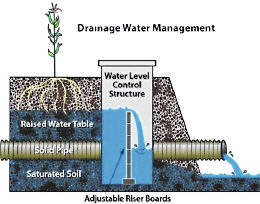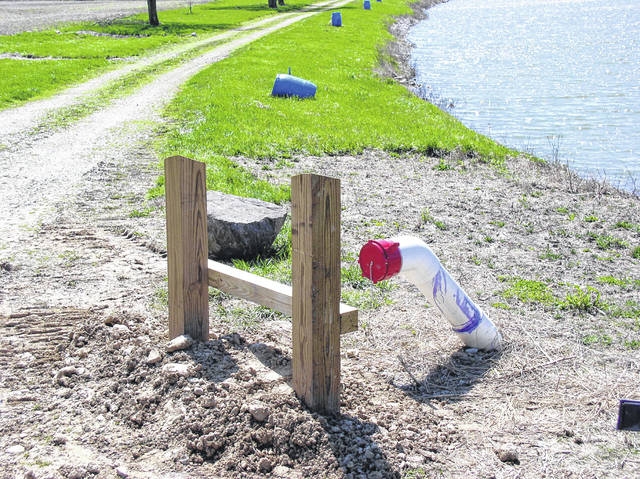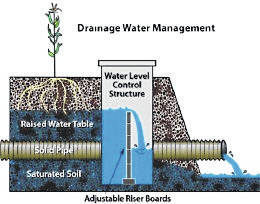



Fayette Soil & Water Conservation District announced this week it is offering design services for subsurface drainage systems and for ponds.
Fayette County is known for agriculture and many of the soils in the county are prime farmland, if drained. The purpose of subsurface drainage is to lower the water table in the soil. The water table is the level at which the soil is entirely saturated with water.
The excess water must be removed to a level below the ground surface where it will not interfere with plant root growth and development. Root growth requires air to be present in the soil. Both water and air need to be present in the spaces between the soil particles, often in equal proportions. If water fills all of these spaces (saturated), there is no room for air.
Other advantages of tile drainage are more consistent yields, earlier and more timely planting, improved harvesting conditions, less wear and tear on equipment, less power required for field operations, better plant stand, less plant stress, fewer plant diseases and less soil compaction.
The soil types in an area to be drained greatly influence the type of system that will be installed and indicate if special problems should be anticipated. Tile drains are placed at uniform depths where possible. The topography of the land influences the grades available, and it is often possible to orient the drains within the field to obtain a desirable grade. The grades should be sufficient to result in a non-silting velocity yet be flat enough that the maximum allowable velocity rate is not exceeded and the drain is not subjected to excessive pressure flow. Too much flow will cause erosion around the drain.
A subsurface drainage system will function only as well as the outlet for the drainage water. When planning a drainage system, it is essential that suitable outlets are available or there are opportunities to develop outlets.
A properly designed systematic subsurface drainage system may also allow a landowner to use controlled drainage/drainage water management. Controlled drainage is the process of adjusting the elevation of a drainage system outlet using a water control structure. This is done to control the volume of water leaving the field.
During spring and fall field operations, the elevation is lowered to allow excess water to flow. The elevation is raised during drier weather periods in order to hold back water and nutrients for use by the growing crop. Contact USDA-NRCS District Conservationist Josh Wilt at 740-313-3213 to for more information about Controlled Drainage/Drainage Water Management practices.
According to the Ohio Department of Natural Resources Division of Wildlife, farm ponds provide important recreational, domestic, and agricultural uses that range from fishing, swimming, and wildlife viewing to water sources for humans and livestock, irrigation, and erosion control. Ponds can be very beneficial to both people and wildlife. People benefit from the recreational opportunities and agricultural uses, as well as the added aesthetics of having a pond on their property. Ponds benefit wildlife by providing feeding and nesting habitat, resting areas, and water sources. Ponds that are constructed, maintained, and managed with these uses in mind are a valuable part of Ohio’s natural resources.
Ponds can be constructed by excavation, embankment (dam), or a combination of the two. Soil at the proposed pond site must be suitable. Unsuitable soils may lead to pond leakage and/or failure of the embankment. The area or watershed draining into the pond must also be large enough to recharge the pond’s water capacity. Ponds with insufficient watersheds become shallow and stagnant with high water temperatures and low oxygen levels. These conditions can lead to fish kills.
Ponds also allow installation of a dry hydrants. Dry hydrants can be installed in just about any pond as a readily available source of water for firefighters. This is an especially nice feature in rural areas that lack public water supplies. Dry hydrants can be installed into new or old ponds, but are usually more convenient to install during construction.
Unfortunately, there is no cost-share available for the construction of systematic subsurface drainage or for recreational ponds. However, Fayette SWCD District Technicians are available to assist landowners with the design of these projects. Call the Fayette SWCD office at 740-313-3242 for more information.



